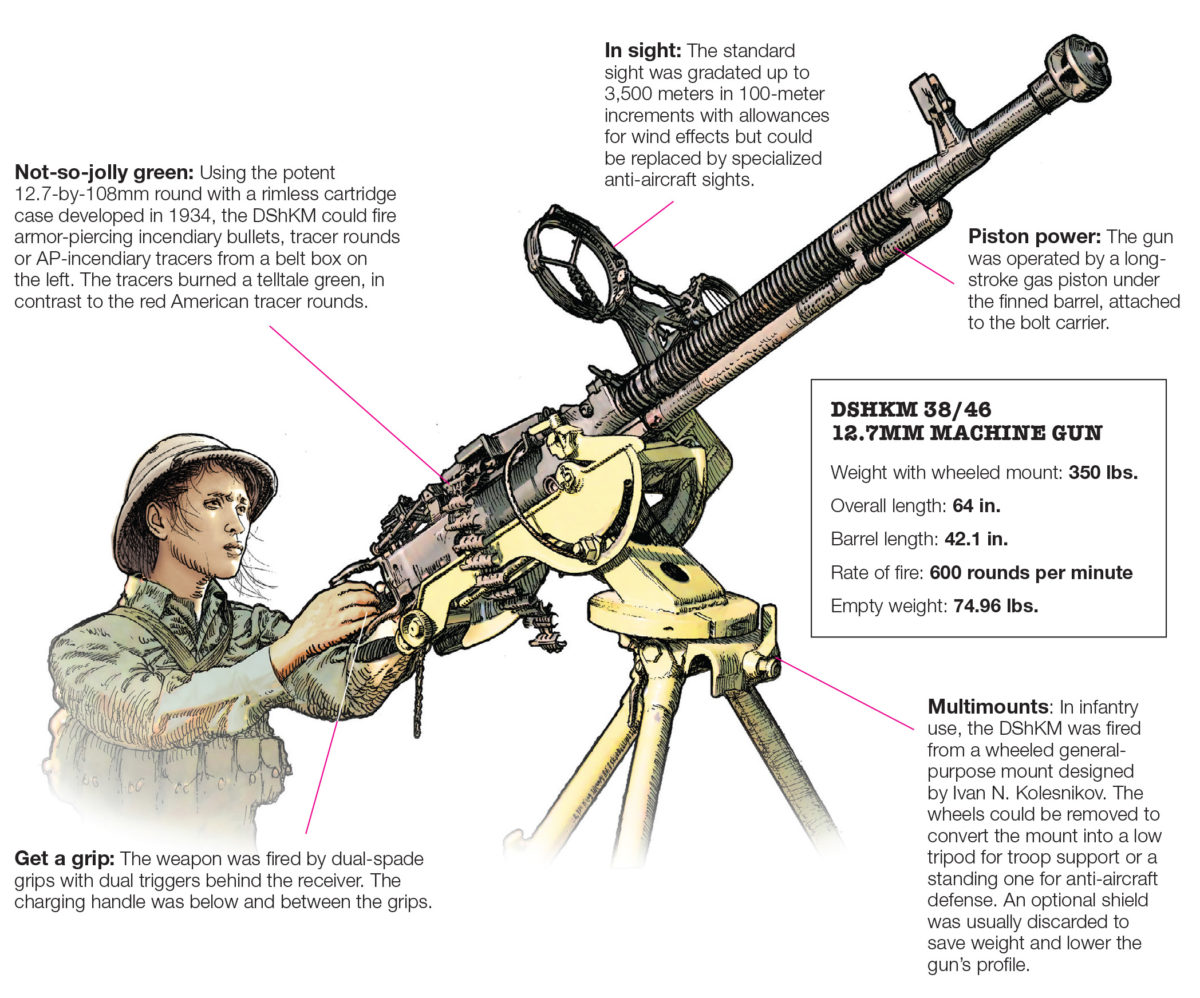Operation Lamar Plain from May 15 to Aug. 14, 1969, a follow-up to the Battle of Hamburger Hill in the A Shau Valley, annihilated the North Vietnamese 2nd Regiment. In the end, 497 enemy soldiers were dead, including the regiment’s commander, and 21 were prisoners. The Americans reported 126 dead and 404 wounded. Added to the human toll were three Hughes OA-6A light observation helicopters destroyed, four brought down but recoverable, three Bell UH-1Hs downed and so many other helos damaged that by the end of the first week the 101st Airborne Division reported only one OA-6 and two Bell AH-1 Cobras flyable. The 101st also reported on May 17: “The enemy demonstrated a complete willingness and capability to engage aircraft at any speed or altitude.”
The key to that bellicosity was the 12.7mm DShKM 38/46, better known as the .51-caliber Copter Killer.
Designed by Vasily A. Degtyaryov with a drum-rotary ammunition feed devised by Georgy S. Shpagin, the Degtyaryova-Shpagina Krupnokaliberny (heavy caliber), or DShK 38, entered Soviet service on Feb. 26, 1939, and earned the nickname Dushka (“Dear”) from its crews. Modifications followed, such as replacing the unsatisfactory 30-round drum with a shuttle-feed mechanism for a 50-round nondisintegrating steel belt. The improved DShKM 38/46, which went into production in February 1945, was used widely by Soviet and Warsaw Pact forces and Third World allies, including North Vietnam.
The DShK, commonly mounted on a tripod, was also placed on Soviet tank turrets during World War II. As NVA forces made growing use of armor in Vietnam and Laos from 1968 on, their T-54, T-55 and PT-76 tanks, along with vehicles such as the BTR-50 armored personnel carrier, carried “.51s” to counter the air superiority the Americans and South Vietnamese enjoyed below the Demilitarized Zone.
The DShKM contributed significantly to the small-arms fire that was responsible for 57 percent of U.S. fixed and rotary wing aircraft downed over South Vietnam and 47 percent in the North. In Soviet production until 1980 and still made in Pakistan, DShKM variants continue to turn up in today’s conflicts.
First published in Vietnam Magazine’s April 2016 issue.





